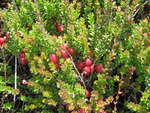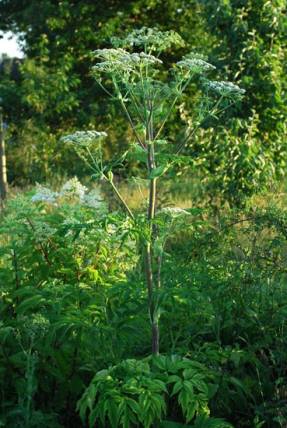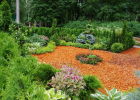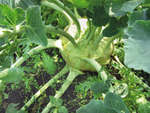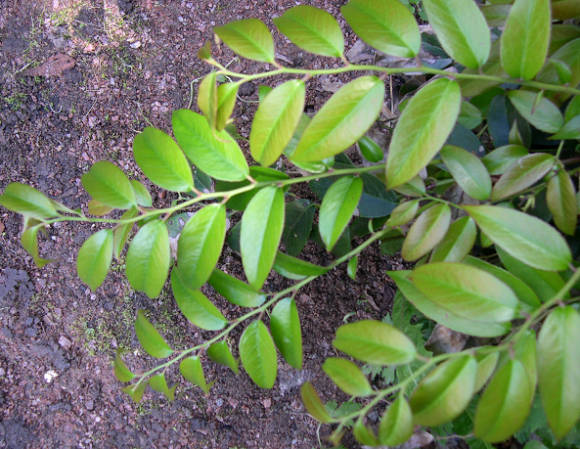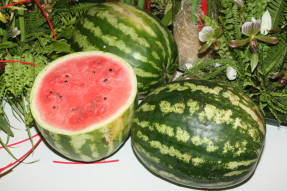 |  |
Short summer
The sum of active temperatures required for a watermelon to form a crop must be at least 30,000C. In central Russia and more northern regions, the period favorable for the growth of watermelon is shorter than the growing season even for early ripening varieties and hybrids. Therefore, plants need to be given a run in development, to protect them from recurrent cold snaps.
One way to solve this problem is to grow seedlings. Since the watermelon belongs to the 12 o'clock day plants (if the day is longer or shorter, the formation of fruits is disturbed), sowing for seedlings is carried out in the third decade of April - early May. Watermelons, like cucumbers, zucchini and pumpkins, do not tolerate transplanting, picking and other procedures, due to which the roots are injured. Therefore, immediately sow the seeds in pots with a volume of at least 300 ml, 10 cm high. Prepare the soil from peat, turf, sand or sawdust, taken in equal proportions. Add ammonium nitrate and potassium sulfate (55 g each), double superphosphate (100 g) and dolomite flour (50-60 g) to a bucket of such a mixture.

When cultivating varieties of watermelon, it is preferable to use seeds that are 2-3 years old. The seeds of the hybrids are also suitable fresh, since a sufficient number of female flowers are laid in the very first year. Before sowing, warm the seeds in hot (+ 500C) water for 20-30 minutes and germinate in wet sand or wet soft paper (filter paper, toilet paper) at a temperature of + 22 + 25 ° C. After 2-3 days, when the root sprouts, spread the seeds (2 pcs.) (Flat) in pots, mulch with sand or humus. Cover the containers with plastic wrap and place in a warm place.
After the emergence of shoots (after about a week), keep the temperature at the same level during the day, and lower it to + 20 ° C at night. Usually in spring the sun shines brightly, but if the weather is cloudy or there is not enough light, turn on the phytolamps. Otherwise, the seedlings will stretch out. In the phase of two or three true leaves, feed the seedlings with infusion of mullein and ash, or any mineral soluble fertilizer.
However, it is not always possible to prepare seedlings. Then the beds on bio-heating will help out. In April, in a sunny but sheltered place from the wind, fold a dung-peat pile about 1 m wide and height, of any length. A compost pile from the first year of laying will also work. Depressions are made in it (3 pcs / 1 sq. M) measuring 30-40 x 40 x 60 cm, which are filled with straw manure and sawdust mixed with nitrate or urea. Spill a stack and a bunch of boiling water, lay a layer of 25-30 cm of humus or fertile soil, cover the bed with a thick film (preferably black), black non-woven material and straw (reed) mats. You can also put old rugs.
When the stack warms up, removing the shelter, at a distance of at least 1 m from each other, make holes about 10 cm deep, spill them with a warm pink solution of potassium permanganate, sow a couple of dry seeds in each and restore the shelter. As the seedlings grow, make a cross-shaped incision in the lower film to bring out the stem, and lift the second layer of the shelter, substituting arcs.
Lack of heat and light

In a temperate climate zone, seedlings are planted in open ground in mid-June, when the threat of frost and return cold has passed. Watermelon does not tolerate the close standing of groundwater, acidic soils, is picky about lighting and loves the bright sun.Therefore, allocate an open place for melon, protected from the north and north-east winds. So that after the rain the water does not stagnate and the soil warms up more, make a raised bed (15-25 cm high), with a slope to the south. Watermelon also grows well on a compost heap. Watermelon can be cultivated like a cucumber - on a trellis, thanks to which the planting is well ventilated and illuminated. With this method of cultivation, the rows are placed every 2 m, and the plants in it - at a distance of 1-1.5 m.
Be sure to fill the soil with phosphorus-potassium fertilizers (Azofoska, Nitrofoska, Kalyphos, or in the fall - a mixture of double superphosphate and potassium salt) - phosphorus and potassium improve the accumulation of sugars in the watermelon. But do not use fresh manure - watermelons are fattened on it, giving only leaves.
To get the watermelon accustomed to the sun, place the seedlings in a permanent place in the late afternoon. Individual plants can be covered with a piece of nonwoven fabric. Above a solid ridge, install a temporary film cover on arches or tragus. Watermelons can also be planted in a greenhouse or tall greenhouse, and as early as May.
Regulating humidity

Young plants consume a lot of water, up to 200 ml per day. Water them abundantly, but not more often than once a week - this stimulates root growth. In addition, the soil should be loosened 3-4 times per season to a depth of 10 cm, while removing weeds. With the opening of female flowers, watermelons are watered twice less often, and when the fruits are formed, they completely stop giving water.
Film shelters are removed at the end of June. However, they are restored in rainy weather or at the end of August so that the plants do not suffer from dew and the difference between night and day temperatures. Ventilate shelters regularly. And so that there is no dripping, stretch gauze or non-woven material over the plants in the greenhouses and the greenhouse.
Improving fruit setting

There are enough pollinators in the middle lane. But in cloudy weather, the plants will have to be pollinated by hand, touching the stamens of one flower to the pistils of two or three others. After pollination, the fruits ripen in 35-45 days.
When sowing with seeds, thin out the seedlings when the first leaf grows, and then in the shatrik phase (3-5 true leaves), leaving one, the strongest specimen in each nest. The distance between plants should not be less than 1 m.
In the south, for the formation of large fruits, minting is used - the tops of the stems are removed to limit their growth and enhance branching. In the middle lane, pinching is required. For the first time, remove the top of the stem above the fifth or sixth true leaf (this stimulates the formation of lateral shoots with female pistillate flowers). The second shaping, leaving 3 leaves after the fruit and no more than 4 fruits on the bush, is carried out at the beginning of the formation of ovaries. Cover the cut points with ground charcoal or a paste of chalk and copper sulphate, then mulch the soil around the plants with peat or add humus to the base of the stems. After a week, spread the lashes evenly over the ridge area and sprinkle with soil in several places or fix with a hairpin. This technique is especially important in open areas - the wind easily turns and twists the stems, breaking off and injuring the leaves.
In the northern regions and with trellis technology, a watermelon is grown in one stem, therefore, pinching is carried out when 3-4 fruits are tied on the plant, and the main stem reaches the trellis wire.
Protectingfrom diseases and pests
Watermelons are harmed by melon aphids, wireworms, gnawing moths, meadow moths, sprout flies, birds and rodents. With a small number of insects, use biological products (Bitoxibazzillin, Lepidocid, Fitoverm). If there are many pests, chemical insecticides will have to be applied. Plants are sprayed with Decis or Fufanon against the meadow moth, gnawing scoops, and melons, and Tantrek protects against aphids. But the systemic drug Aktar is more effective.Only traps and substances with a pungent deterrent smell can save from rodents (rags soaked, for example, with grease or creolin, are laid out along the perimeter of the melon). From birds that peck fruits, pull a net over the melons.
Watermelons are affected by the same diseases as cucumbers - powdery mildew, peronosporosis, ascochitosis, anthracnose. Therefore, the means of prevention and treatment are the same - Ordan, colloidal sulfur, Tiovit-jet, Abiga-Peak, HOM. And so that the fruits do not come into contact with moist soil, place pieces of board, polymer insulating material under them, or place them in nets and hang them on pegs driven in next to them.

